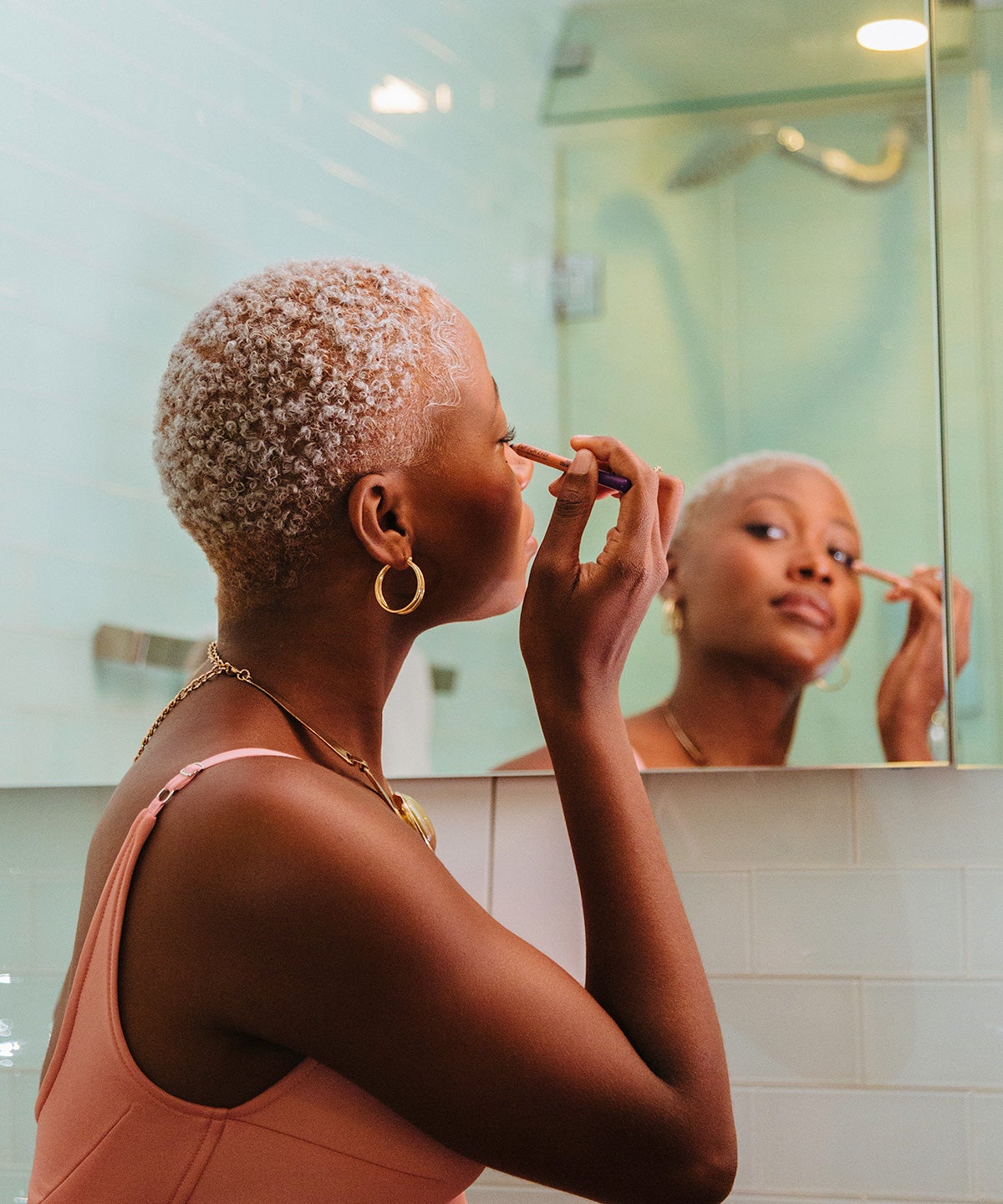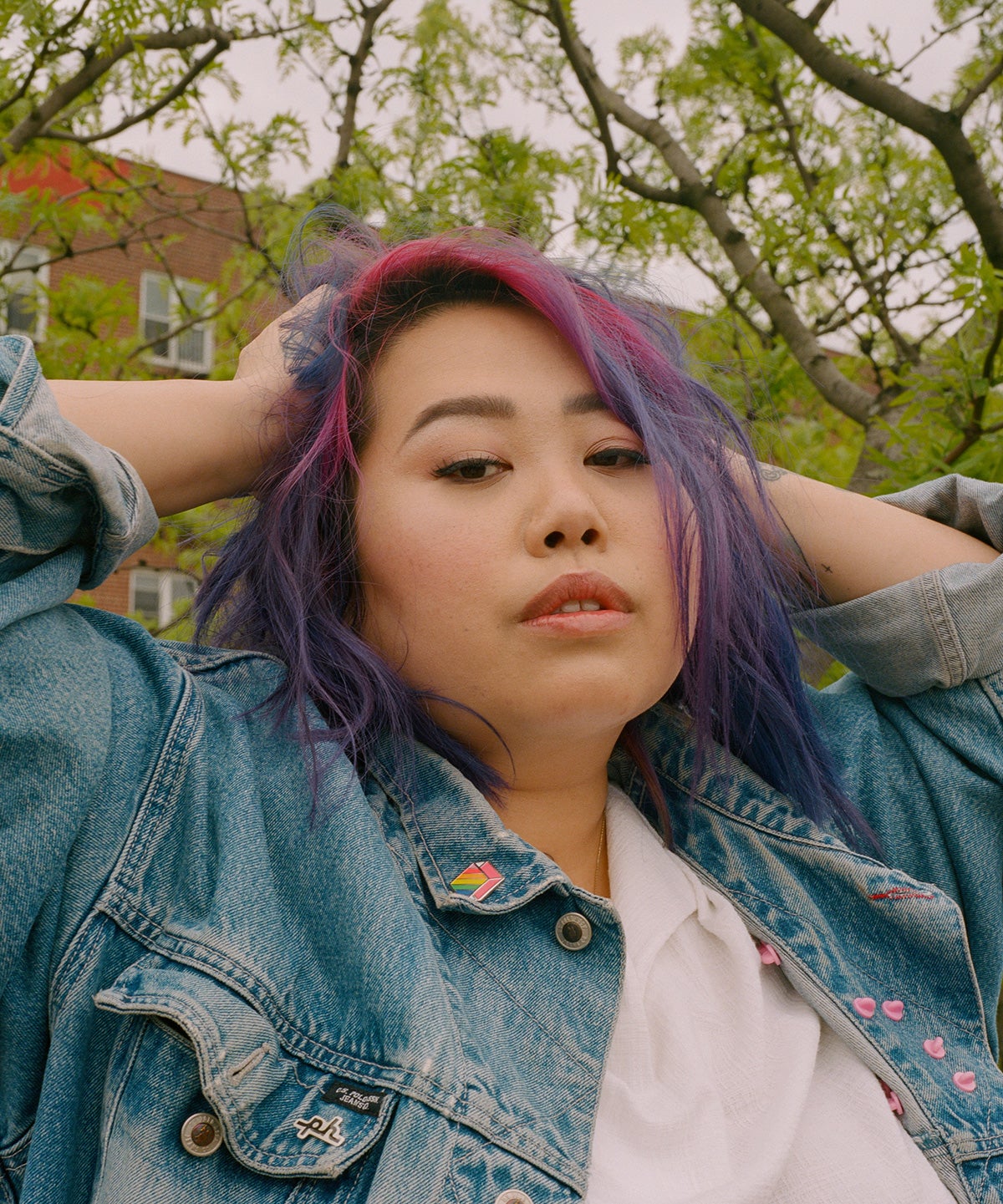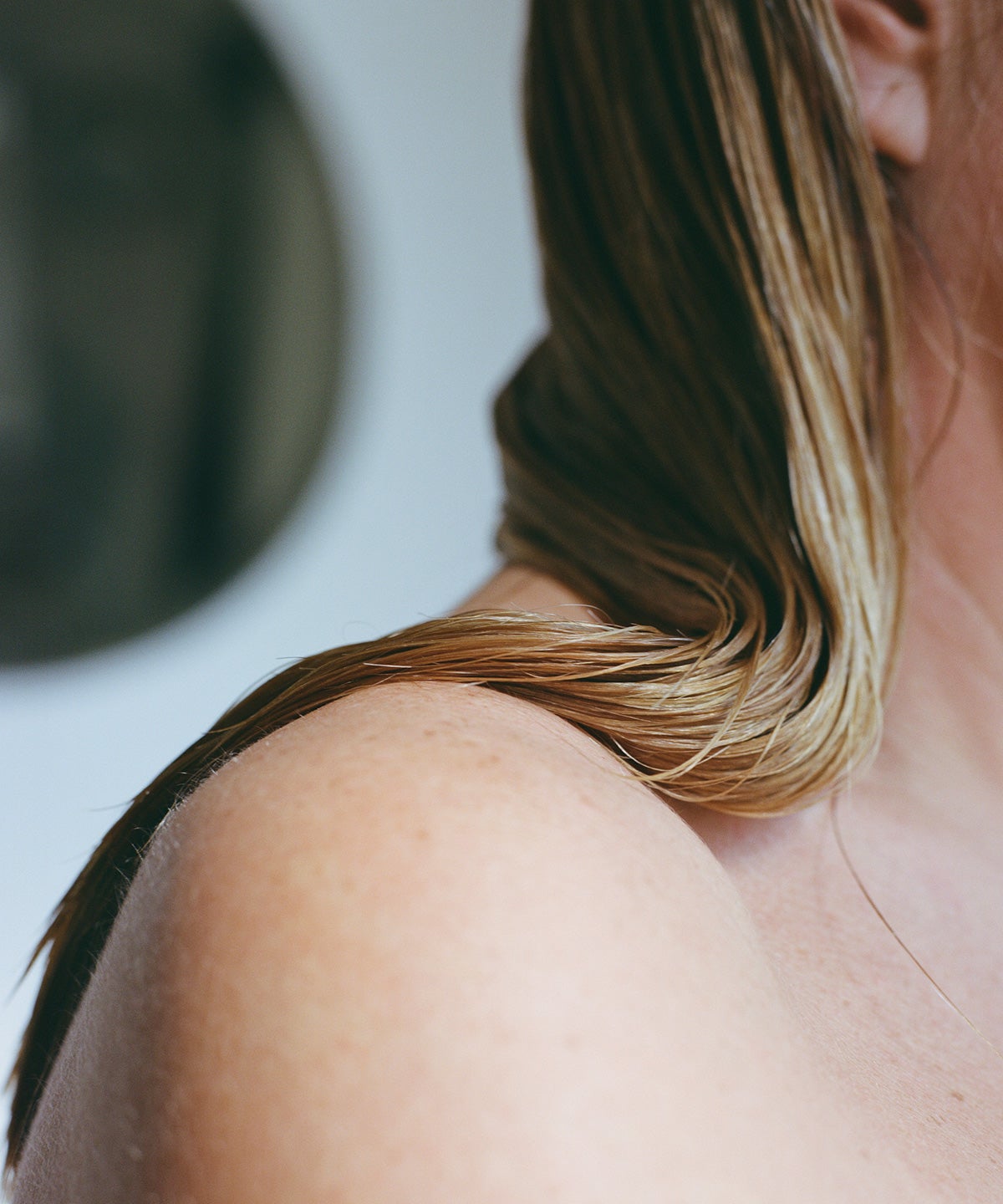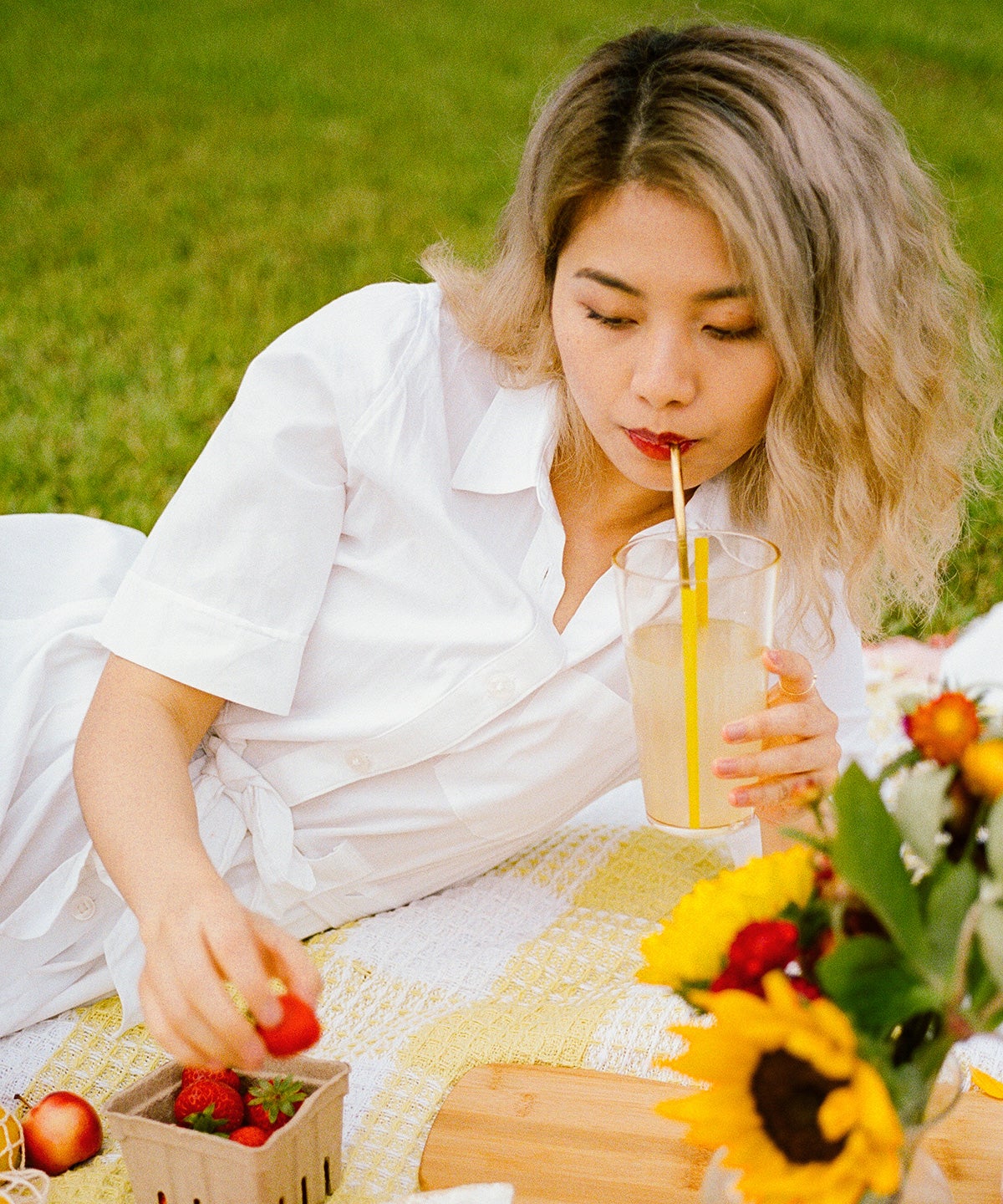
Trusting someone with your hair colour requires a leap of faith and even a bit of hope — which, every so often, is dashed by a botched colour job. Maybe you requested ashy blonde, but ended up with a brassy yellow that just looks off. Or perhaps you envisioned a medium-brown hue with a touch of caramel, but left the salon with anything but warm chocolate. Asked for natural-looking highlights and got skunk-inspired streaks instead?
Although all colourists ultimately want happy, satisfied clients, there’s always the possibility of human error or a breakdown in communication. But before you resign yourself to wearing a hat for the foreseeable future, consider this: Most colour catastrophes are completely fixable over time.
To help, we consulted three expert colourists who shared what you can do to fix the most commonplace mishaps. The solution might involve giving your colourist another go (hey, everyone deserves a second chance!), kicking off the correction process with a few at-home products, or simply cutting your losses to find a new colourist for a redo. Read on for exactly what to do if you can’t stand your new hair colour.

Wait A Minute Before Deciding You Don’t Like The Hair Colour
If your colour job left your hair looking more like Carrot Top than Christina Hendricks, your first instinct might be to request a quick fix. But, for the sake of your hair, consult an expert before doing anything. “Because tones, formulas, and techniques range so broadly, only an expert can make a professional assessment about when and how [your hair] can be processed again,” says Maisha Cogle, a colourist at New York-based Butterfly Studio Salon. “Typically, hair can be processed again immediately, but leave it to the technician to make the call. Hair health comes first.”
Celebrity colourist Kari Hill of Meche Salon agrees: “It depends on the amount of possible damage that has occurred. I definitely say to take the hair-colouring process in baby steps. Consult with your stylist and determine what is best for the health of your hair and go from there.”Photographed by Olivia Joan.

How To Ask Your Colourist for The Hair Colour You Really Want
Don’t give up on your colourist at the first sign of something going wrong, especially if you’ve been to them in the past with positive results. “Trust them to fix it if they’ve been your colourist over many visits to the salon, and you’ve built a relationship,” says Cogle. “You know their skills, and they know your hair and unique preferences, so allow them the opportunity to make the adjustment.” If it’s their first time working on your hair, but you’ve had a good rapport and experience overall, she says let them try again, adding: “Trust works both ways, so finding a hair expert who vibes with and communicates with you is essential.”
However, if you feel intimidated or uncomfortable voicing your concerns — hit the road. “Any hair-colour appointment, particularly a corrective one, should feel like a collaboration between you and your colourist,” explains Cogle. “We always want you to feel happy and confident with the outcome.” Hill agrees, adding, “When communication is broken, and your colourist acts defensive or has a diva-like attitude, just cut your losses.”
Cherin Choi, a colourist at Los Angeles-based Benjamin Arts District has a good tip for sussing out if your stylist is actually up for the task: “If they don’t have any work on their profile showing they can achieve what you want, find someone else.” She adds: “It may cost more in the end, but having the right colour is priceless.”Photographed Sophia Wilson.

Please Don’t Try To Fix Your Hair Colour At Home
No matter how your dye job was bungled, most colourists agree you shouldn’t try to fix it at home. “Colour-removal products are created specifically for professional use,” explains Cogle. “They’re hard to get your hands on for a reason. We choose the best option for colour removal based on a few key things: how much colour we need to remove (for example, someone going from black to red or blonde versus someone who’s a touch darker than they’d like); what was previously used on hair (such as permanent colour vs. semi-permanent vs. demi-permanent); and what would be best suited for their specific hair type, including its current condition.”
The truth is that the colour environment, there are many variables in lightener formulas, different strength developers, techniques, and so on. These differences are the tricks of the trade, and one size does not fit all,” she adds.
Usually, professionals will first try products that remove colour without bleach or ammonia. “These contain sulfur and shrink the dye molecules trapped in your hair,” says Choi. “It allows the colour to wash out and is much more gentle than using bleach. It doesn’t have a 100% success rate and can only pull out so much, if it’s permanent or semi-permanent [dye].” For more serious removal, the pros reach for bleach. Though it’s a harsher process, “now that there’s Olaplex, it’s a less damaging process overall,” says Choi. “To fix that green-hair-in-a-pool moment, your colourist may use a mineral remover, which pulls out buildup and may slightly tweak the tone. A bad blonde job can be tackled in so many different ways and is quite specific to what actually went wrong.”Photographed by Hayleigh Longman.

Can Shampoo Help Colour Correct Your Hair?
There are a few products you can use at home to help kick-start the correction process, and shampoo is one of them. “If you feel like your blond colour ended up too dark, utilise a clarifying shampoo to help fade or take the edge off,” advises Hill. “Keep in mind it can also make colour brassy, so you may need to follow up with a purple shampoo to counteract that.”
According to Choi, you can also use hot water along with any shampoo or soap high in sulfates — which are abrasive enough to help fade colour. “It will make your hair feel much more dry, so if you’re concerned about the integrity of your hair, see a colourist before taking matters into your own hands,” she says. On the flip side, if you’ve gone too light, Hill recommends a deep conditioner. “Before you come in to get corrected, sleep for a week in a colour treatment mask,” she says. “The mask can help fade your colour, through over-conditioning, by one shade. Then you can utilise a gloss or toner to deposit colour that has been removed.”
Still, Cogle advises playing it safe: “It’s best to get a recommendation as to which shampoos and how many are necessary before moving on to the next step. Sometimes, they can cause more harm than good, such as pulling out too much colour or revealing unwanted tones.”Photographed by Natalia Mantini.

An Easy Fix For Your Brassy Hair Colour
A too-brassy dye job is probably the easiest fix, calling for a toner correction at the salon. “Sometimes, the highlights need to be lightened a bit,” says Cogle. “Brassy highlights can result from the highlights not being processed light enough, particularly on darker bases.”If you can’t wait for your next salon appointment, try eliminating brassy tones with a purple or blue-tinted shampoo, which contains correcting and neutralising pigments. We love this formula from Matrix, which you can leave on your hair for a few minutes for extra toning.Photographed by Natalia Mantini.

“Highlights” that look more like skunk stripes require more professional expertise. “This issue can sometimes be corrected by simply toning down the highlights so they blend better with the natural hair in between,” says Cogle — this technique is often called rooting. “Or the opposite may need to happen, and the natural hair will need to be lightened to lessen the contrast. It all depends on the desired result. Sometimes, a few more highlights are needed to fill in spaces. If the highlight is stripe-y and too chunky, then a lowlight may be necessary to break it up.”
Whatever you do, though, Cogle says not to fix this at home, especially if you have ombré or balayage highlights. “Clients come in all the time having tried this themselves, and it’s a disaster.”Photographed by Jessica Xie.

Consider Lightening Your Too-Dark Hair Colour
If you’re already regretting your decision to go full-on Morticia Addams black, your colourist may be able to dial it down with a colour softener or remover. But you’re in luck: “Often, if a colour appears too dark at first, it lightens on its own after a few shampoos, even with just your regular shampoo,” says Cogle. Hill adds that while there’s no quick fix for going lighter, you can speed up the process by “sleeping in deep conditioner to try to fade hair naturally before going to get a colour correction.” We suggest sleeping with a formula that is free of parabens and sulfates, you don’t dry your hair out in the process. This one from Amika will leave your strands feeling silky even if it isn’t left on overnight.
You could also try a colour-depositing hair mask, like the Christophe Robin Shade Variation Hair Mask, or dpHUE
Gloss+ Semi-permanent Hair Color and Deep Conditioner, for a quick and in-between fix, if the correction isn’t too extreme.Photographed by Shingi Rice.

A Bad Hair Dye Job Is An Easy Fix
The good news? It’s all going to be okay. “Everything can be fixed within a reasonable time,” Hill assures. “Hair grows half an inch a month and replenishes itself, so you are never completely screwed.” Cogle agrees, adding, “The beauty of hair colour is that, as long as the hair is still on the head, it can be fixed.
The question is, how long will it take? Typically, colour can be tweaked right away by adjusting the tone, adding more highlights, and so on, but a truly botched colour job takes time. After the first appointment, it will look a lot better and only improve from there, but it typically takes a few more appointments after the first.”
In other words: Better days are ahead.Photographed by Jessica Xie.
Like what you see? How about some more R29 goodness, right here?
“My Hair Helps Me To Experiment With My Gender”